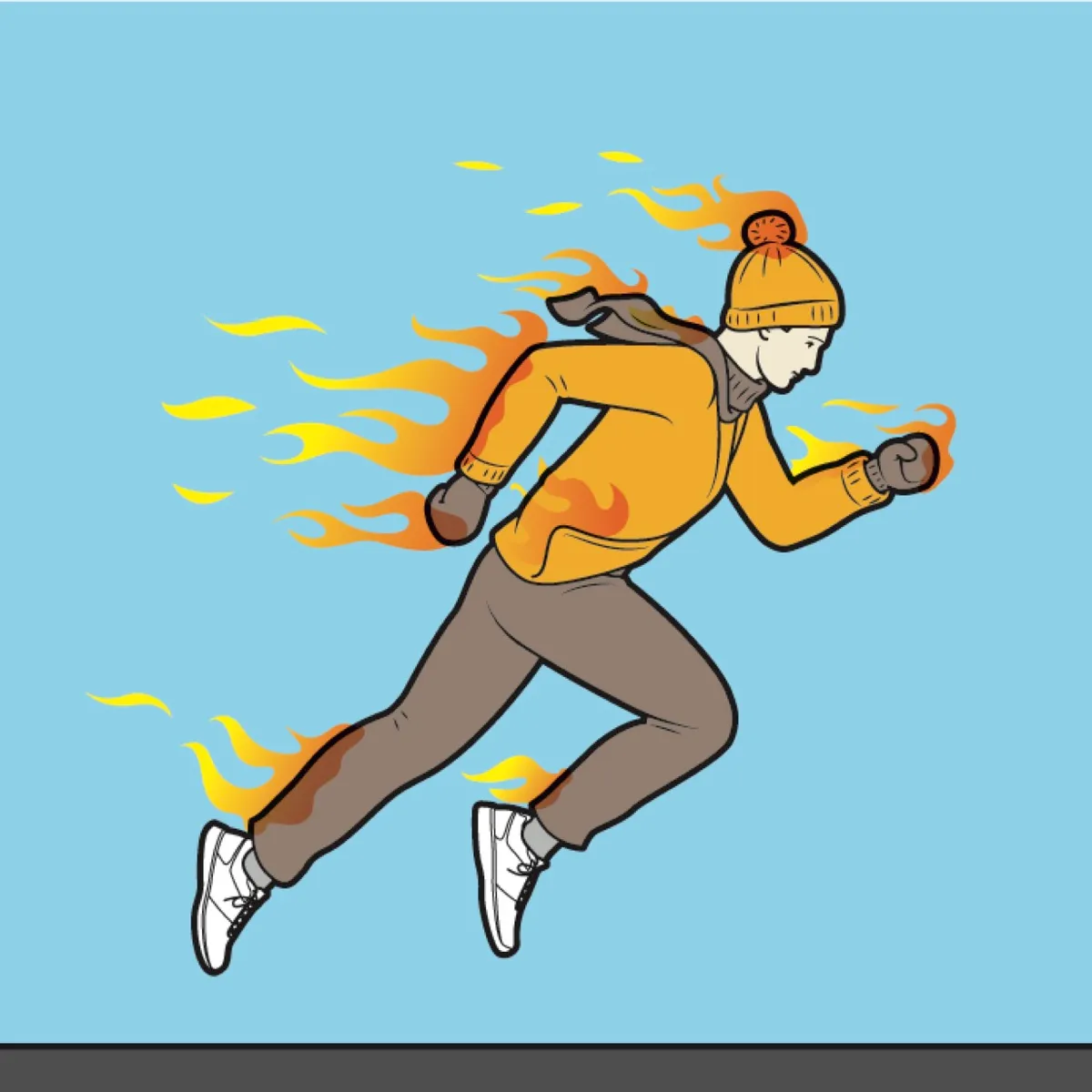1
Atmospheric Compression

At high speeds, it isn’t friction with the air that produces most of the heat, it’s the compression. Like a ship moving through water, you push a bow wave of air in front of you. The air molecules can’t get out of the way in time and they bunch up, banging into each other and getting hotter. Any parts of your body facing into the wind will be heated up.
2
Hypersonic

The best place to run would be a long beach, like Pendine Sands in South Wales. The air is denser at sea level, which means there are more molecules to compress and heat up. Bodies are typically cremated at around 1,500°C and aircraft research from NASA reveals that you’d need to be running at Mach 5 (6,000km/h) to reach that temperature.
3
Wrap Up Warm

But that’s the temperature to completely incinerate your entire body – your clothes will catch fire long before you reach that point. Nylon has an ignition point of about 500°C and wool will catch fire at 230°C. Which means that with the right attire, you could trot along at a leisurely 2,500km/h and still burst into flames.
Read more:
- The thought experiment: What would happen if everyone on the planet suddenly went vegan?
- The thought experiment: What would happen if humans grew wings?
Subscribe to BBC Focus magazine for fascinating new Q&As every month and follow @sciencefocusQA on Twitter for your daily dose of fun science facts.
